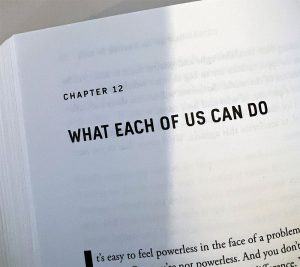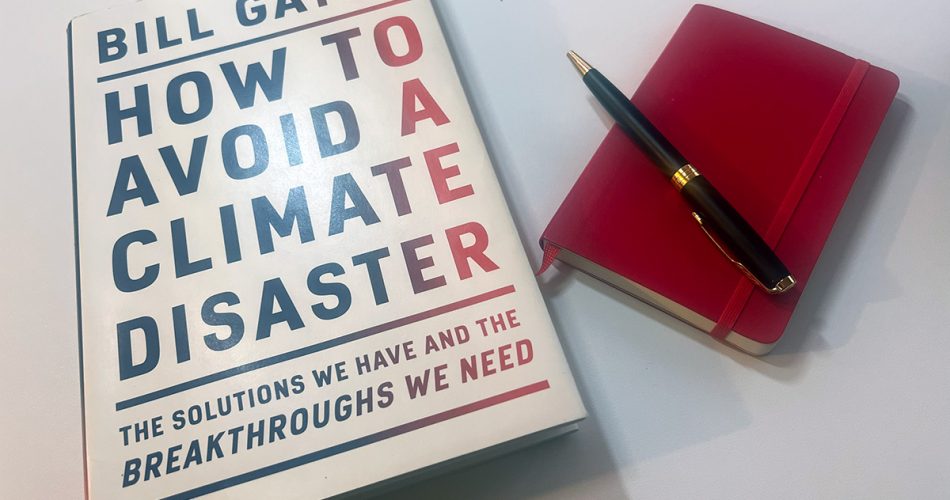Introduction
Bill Gates, already a transformative figure in the software industry, continues to strive for global change through his foundation’s efforts to eradicate polio and malaria. His focus has also expanded to include the climate crisis.
For over a decade, Gates has been deepening his understanding of climate change and investing in innovative solutions to address it. The question he seeks to answer is: What will it take to avert a climate catastrophe? His insights and perspectives are detailed in his book, which offers a look into his vision for a sustainable future.
What is it about?
Gates says that we need to remove fifty-one billion tons of greenhouse gas emissions from the atmosphere and achieve net-zero carbon emissions by 2050. And by “remove fifty-one tons”, he does not mean that there are 51 billion tons in total. Approximately 51 billion tons is how much we add to the atmosphere every year. So, we need to go from there to net zero if we are to avert a climate crisis.
Zero is what we need to aim for […] Humans need to stop adding greenhouse gasses to the atmosphere. This sounds difficult, because it will be […] the world has never done anything this big.
Bill Gates
While he admits to using the term “zero” loosely—clearly implying that we should aim to return to pre-industrial levels of emissions rather than eliminating them—he asserts that we must strive for net zero. This is because even a 50% reduction in emissions at this stage would not be sufficient to halt the rise in global temperatures. And there are impractical reasons for striving for 1% or 5% for example, as this would imply that some countries would not need to cooperate, and then the problems of type “how we decide who can still use this 1%” would arise.
Next, he describes the difference what happens nat a global temperature rise of 2º and how the increase of 3º compared to 2º does not mean that the things are roughly 33% worse, but how instead with every slight increase in temperature things get exponentially worse, so the difference between 2º rise and a 3º rise would mean that the stuff in some areas get 100% worse.
He does have to clearly communicate the potential consequences of maintaining the Status Quo. Still, he is more interested in communicating his vision than turning things around, which will be extremely hard but doable.
In doing so, over the following five chapters, he focuses on five activities that generate the most emissions—plugging in, making things, growing things, getting around, and staying calm and warm.

In every one of these chapters, he describes the technologies we currently have, how they are the problem, or how they are making things worse. He then shares his knowledge on how we can improve them, how far we must go and discusses some of the future technologies we can potentially expect in these areas, and whether these technologies will even help us and how.
He does not stop at technology—he considers the economic angle for both private citizens and governments. For example, in the Chapter on how we move, he discusses how, as high-mileage electric vehicles replace today’s cars, revenue from gas taxes will decline, potentially reducing funding for road construction. He then lays out his ideas for tackling this problem. And in all five of these chapters, there’s interesting stuff like that, stuff many of us have never thought about.
After examining these five factors, in the last part of the book, he considers how countries can make an impact, why policies matter, and how each of us can contribute.
Review
The strength of this book is facts, figures, and tables. At times, it’s like you’re studying for a college exam. However, that is more to be understood as thoroughness than dryness.

The book touches on the subject from many different angles, not simply one – technological, economic, or political. Instead, all these angles are taken into consideration. And he does manage to make topics that are boring to an average person, like state policies, at least a bit interesting.
But how good are his solutions? Well, it is not that easy for a non-expert to judge, but I would say he gets most things right, as, from experience, what he writes matches what I read elsewhere.
However, I did notice some peculiar inconsistencies, particularly in the treatment of nuclear power versus renewables. Atomic power was scrutinised with a significantly less critical eye than wind and solar. The challenges of wind and solar power were discussed in detail, whereas the discussion of nuclear power appeared less critical. At least, that was the impression I received.
Another peculiar point I noticed is that he concedes too readily on the matter of meat consumption, considering significant improvements in this area unrealistic due to “cultural reasons.” However, unlike mobility or electricity, meat consumption is not essential to society. Therefore, I find this resignation odd. It seems unnecessarily pessimistic, as reducing meat consumption is indeed something each of us can do in our own lives, and many climate activists are promoting.
But these objections are minor, as I did indeed find the book well-reasoned and the themes critically analysed from multiple angles.
Conclusion
In under 270 pages, this book remarkably addresses why climate change is occurring, its consequences, the necessary actions, and the methods to implement them. It acknowledges the immense difficulty of making changes, yet it maintains an optimistic tone and offers, in my view, quite feasible solutions to one of our era’s most pressing challenges.
So, as we are a part of this world, it is our duty to stay informed about the issues and challenges, think for ourselves and not simply believe word-for-word what politicians tell us. In this regard, the book will undoubtedly help you do that.

